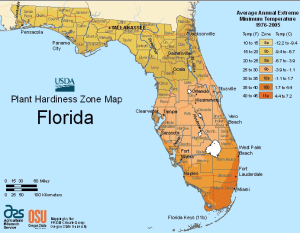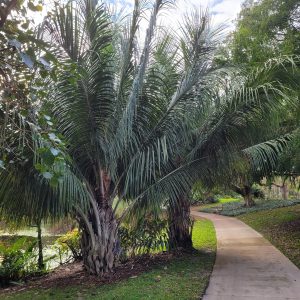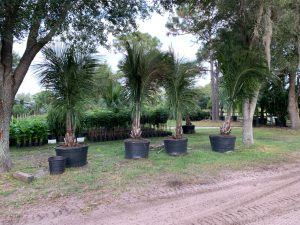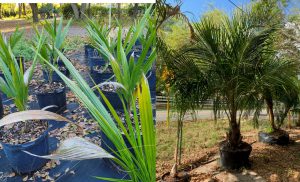
Much of gardening and landscaping in Florida revolves around the USDA climate zone realities of potential freezes or cold weather. People in the panhandle are of like cold-hardy avocadoes and . People in Central Florida yearn for tropical like flowers, foliage and fruit… If it makes you feel any better, people in south Florida have their own tantalizing plants that are practically moored the geographic space between the Tropics of Cancer and Capricorn. For instance, cacao will lose its leaves when temperatures reach the 50’s. It seems that human nature always has us yearning for the grass on the other side of fence. The reality is much of central Florida to northern portion of south Florida (i.e., USDA Hardiness Zone 9) can be subject to occasionally damaging frosts – which rules out many tropical plants to most property owners and nursery growers unwilling to gamble with potentially expensive landscape material. Sure, microclimate and the decreasing risk of severe, long duration sub-freezing events is enough to entice some brave planters. However, why not remove the risk as much as possible? There are few things in life that are certain (death and taxes certainly come to mind…), but for folks that only experience mild frosts, there is occasional frigid bluster of USDA Hardiness Zone 9 that would wither and kill most true tropical palms to their frost-sensitive crownshafts…


From Madagascar, an island-nation and evolutionary furnace that also brought you the frost-tolerant Bismarck Palm… introducing Beccariophoenix alfredii, or “the high plateau coconut palm.” Despite the name, this palm does not produce edible coconuts, but seen on the street, most people would mistake this palm for its cousin, the true coconut palm. This is a bizarre and still poorly understood palm – it was not known to science until 2007 – and before that, it was considered to be a subpopulation of the window palm (Beccariophoenix fenestralis). Since its cultivation has been a relatively recent endeavor, there is still much to be ascertained. So, buyer beware – this palm may have certain issues that have yet to be encountered like diseases, pests, or disorders that may manifest in Florida’s landscape.

However, this palm has shown promise in enduring cold temperatures to 25° F, particularly for mature individuals, and for many a gardener/landscaper – that is more than enough to give this palm a try. Be aware of seed and nursery source as well. There is a high probability that many of the seeds/plants on the market are actually window palm, which also has some cold tolerance, but not to the same degree as the high plateau coconut palm.

Resources:
- My website
- Palms for Central Florida
- Palms for South Florida
- PlantAnt results – (Note: These nurseries typically only sell wholesale)
- Photo credits – John Roberts, UF/IFAS unless otherwise noted
 1
1
